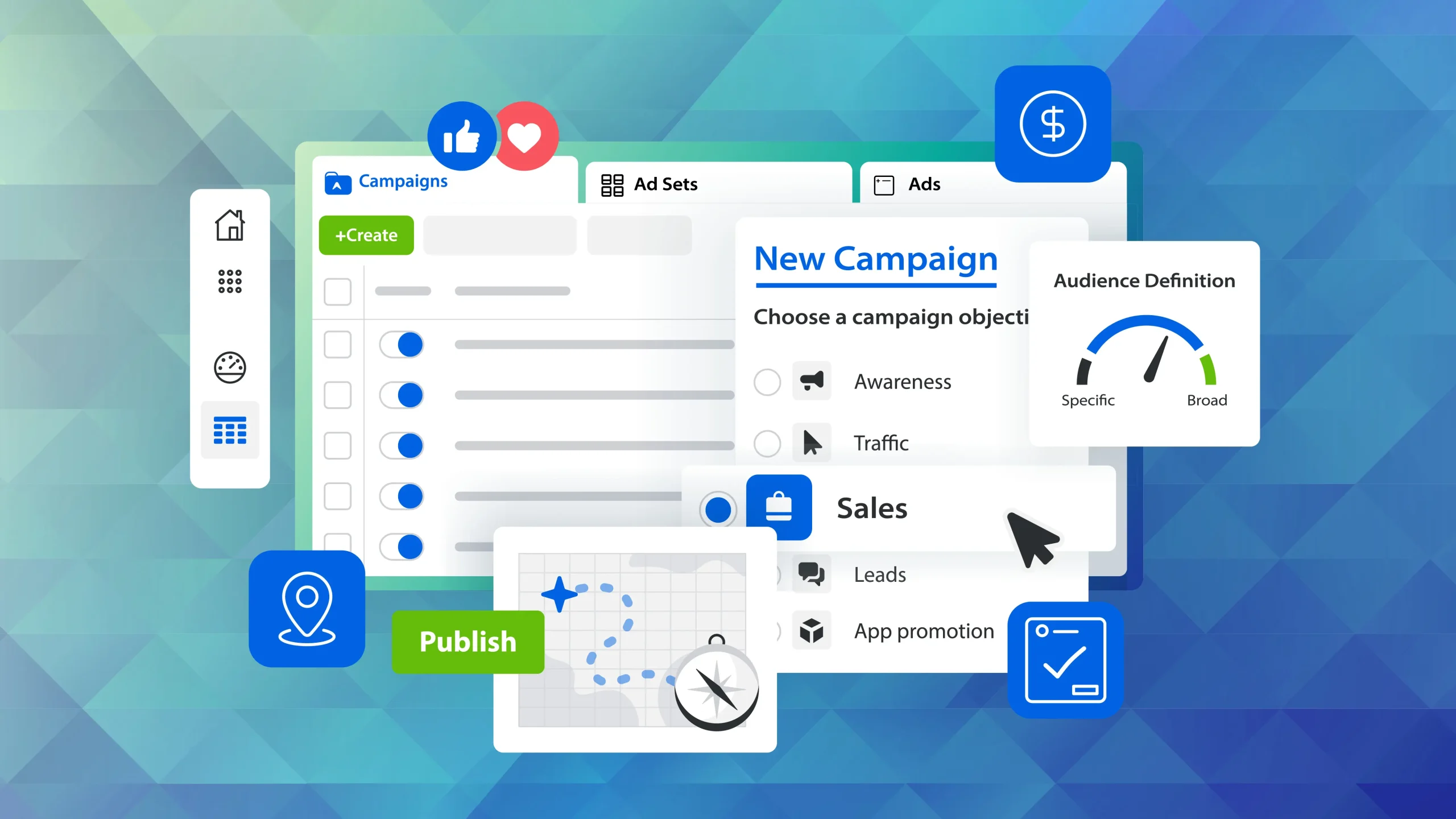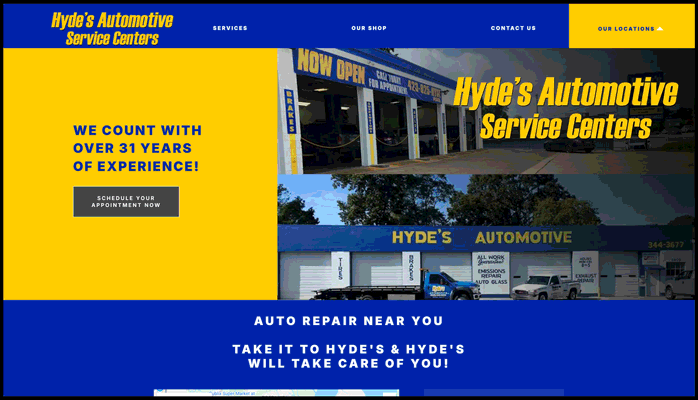Facebook Ads for Auto Repair Shops: A Proven Strategy for More Customers
Facebook isn’t just a social platform—it’s a powerful marketing tool. With over 2.9 billion monthly active users, it provides auto repair shops with an unmatched opportunity to attract local customers. But here’s the catch: Facebook Ads aren’t as simple as “set it and forget it.”
The platform is constantly changing, and what worked yesterday might not work today. If you’re running Facebook Ads for your shop, you must stay ahead of the curve to avoid wasted ad spend and poor results.
After years of experience managing ads for auto repair shops, we’ve learned what works, what doesn’t, and how to make every dollar count. Below, we’ll share the best strategies—along with real insights you won’t find in generic marketing blogs.
How to Set Up Facebook Ads for Your Auto Repair Shop
1. Always Build Your Ads Manually
Facebook offers automated ad creation, but you should never rely on it. AI is improving, but it still doesn’t know your business, customers, or local market like you do. If you let Facebook make all the decisions, you’ll waste money on irrelevant clicks and miss out on real potential customers.
Instead, manually configure your:
- Audience targeting
- Placements
- Budget and bid strategy
- Ad creative and messaging
This way, you’re making intentional choices based on what actually works for auto repair shops.
2. Choose the Right Campaign Type
Facebook’s Ads Manager offers multiple campaign types. For auto repair shops, these are the best options:
- Lead Generation Ads (Instant Forms) – Best for capturing leads without sending users to another website.
- Traffic Ads – Drives people to your website to book an appointment.
- Engagement Ads – Increases interactions on your Facebook posts.
- Local Awareness Ads – Helps you target people within a set radius of your shop.
For most auto repair shops, Lead Generation Ads with Facebook’s Instant Forms will drive the most appointments.
💡 Unique Insight: Instant Forms vs. Landing Pages
We switched from external landing pages to Facebook’s Instant Forms, and conversions improved. Why? Facebook rewards content that keeps users on their platform. If you send users off-site, your ad reach may decline.
However, Facebook constantly updates how these forms work. At first, Instant Forms didn’t require any fields to be filled out, so we often didn’t get complete contact info from leads. To fix this, we added multiple fields—but later, Facebook made all fields required, making our form too long and reducing conversions.
Lesson learned: Stay on top of these changes!
3. Optimize Your Target Audience
Facebook allows you to laser-focus your targeting so you don’t waste money on the wrong people. For auto repair shops, consider these targeting strategies:
📍 Location-Based Targeting
- Set a tight radius around your shop. No one is driving 50 miles for an oil change.
- Exclude locations where people wouldn’t realistically visit your shop.
🚗 Vehicle & Ownership-Based Targeting
- Target people who own older cars that need frequent repairs.
- If you specialize in specific brands, narrow your audience to those vehicle owners.
👨👩👦 Demographics & Life Events
- People who recently moved into your area might need a new mechanic.
- Young drivers (18-25) tend to neglect maintenance and might need reminders.
💰 Avoid Wasting Ad Spend
- Exclude people who just bought a new car—they won’t need repairs for a while.
- Remove past customers if you don’t want to pay for clicks from people who already know you.
4. Keep Ads Fresh to Avoid Fatigue
If you notice your impressions dropping, cost-per-click increasing, or fewer leads coming in, your ad is likely going stale.
At a minimum, update your ads once per month. Change:
- Images
- Headlines
- Descriptions
- Primary Text (Facebook recently added this field—don’t overlook it!)
💡 Unique Insight: Ad Fatigue is Real
If you keep running the same ads for months, Facebook will show them less often and charge you more per click. We’ve seen shops lose leads simply because they didn’t refresh their creative.
5. Use A/B Testing to Maximize Performance
There’s no universal “best practice” for Facebook Ads—what works for one shop might not work for another. That’s why A/B testing (split testing) is crucial.
What to test?
✅ Different headlines
✅ Various images (car close-ups vs. mechanics working)
✅ Audience filters (age, vehicle ownership, income level)
✅ Offers (free inspections vs. discounted oil changes)
Facebook allows built-in A/B testing—use it to optimize based on data, not guesswork.
How Much Should You Spend on Facebook Ads?
Your budget depends on your shop’s goals, but here’s a good starting point:
- $5-$10 per day → If you’re testing the waters.
- $20-$50 per day → If you want a steady flow of leads.
- $50+ per day → If you’re serious about dominating your local market.
💡 Pro Tip: Facebook rewards consistency. Running a lower-budget campaign every month is better than spending big for one month and stopping.
Final Thoughts: The Facebook Ads Formula for Auto Repair Shops
Facebook Ads are a game-changer for auto repair shops, but only if you stay proactive. The key takeaways:
✅ Build campaigns manually—don’t let Facebook make the decisions.
✅ Use Instant Forms for better conversions, but monitor Facebook’s changes.
✅ Update your ads at least monthly to avoid fatigue.
✅ A/B test constantly—don’t assume what works.
✅ Track your results and adjust to keep your cost-per-lead low.
FAQs About Facebook Ads for Auto Repair Shops
How much do Facebook Ads cost per lead?
It depends on your location and competition, but most shops see $5-$25 per lead.
Should I run Facebook Ads or Google Ads?
Both work well, but they serve different purposes:
- Facebook Ads = Great for generating awareness and attracting new customers.
- Google Ads = Best for capturing people actively searching for repairs.
💡 Unique Insight: Facebook recently added a “Primary Text” field in ads. If you weren’t staying on top of updates, your Ads might have been underperforming!
How often should I update my Facebook Ads?
At minimum, once a month. If your performance starts dipping, refresh your creatives immediately.
Should I use Instant Forms or send people to my website?
Instant Forms tend to perform better because Facebook rewards ads that keep users on their platform. But test both!
Does Facebook advertising actually work for auto repair shops?
Yes—if done correctly. Shops that use manual targeting, A/B testing, and frequent updates get the best results.


